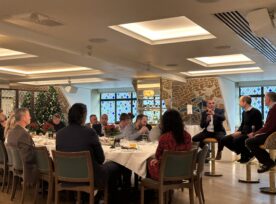When I hear the term “dealer transformation,” I always think that the term is too narrow in speaking about just the transformation within the dealership. There is no doubt that the consumer today has very different expectations and preferences concerning dealerships and shopping experiences than the consumer of ten years ago, and dealerships need to transition from a sales focus toward a more experiential focus. However, they are not the only ones that must change, and their ability to change also depends greatly on the efforts of their OEMs.
When you think of EV-only OEMs, they don’t have dealerships – they have showrooms. A good part of their vehicles are sold online, and the showrooms are for product expertise and vehicle experiences. They avoid hard selling so they can focus on supporting the customer’s needs instead, and that is something that is needed at all dealerships. To achieve this, mindset changes must happen across the brand, not just in retail, to support these new business models.
Customer Loyalty Depends On A Holistic Transformation
The average automotive shopper today spends approximately three months shopping for a vehicle. During those 3 months, on average, a consumer performs over 900 shopping actions, and 71% of these actions happen on the smartphone. Customers can and will now do most of their research online before they ever visit a dealership, and the quality and location of where they source their research matter. Today, a consumer is likely to explore twelve brands, consider six brands, and decide between two brands. To achieve the best research and shopping experience, the brand must use the latest and most effective technology such as AI to improve brand websites, marketing efforts, and commerce experiences.
It is critical to acknowledge that these consumers also want to do more online transactions like they do with all their other products and services. This is why some OEMs are looking at more D2C services for consumers so they can build, price, order, and reserve their vehicles online. Some OEMs are even working with their dealerships to try a test program to see if they can sell vehicles completely online through the dealer websites.
What Will D2C Look Like for Dealerships?
I know some dealers worry that a more D2C online experience will ultimately cut the dealer out of the process. I see a very different world: one with the OEM and dealer being partners in giving the consumers the shopping and transacting experience that they want. The dealers could be the OEM showrooms where consumers can experience vehicles in the physical world and service those vehicles with factory-trained technicians. These services are extremely valuable and still need to be done in person so that customers can maximize their investment.
OEMs and dealerships that can provide consumers with experiences that address their preferences are going to be the ones that gain market share and create brand loyalty. In an era where loyalty is waning, and customers have more access to more information and different brands regardless of location, OEMs and dealerships will have to secure customer trust and loyalty in new ways.
Perficient has been leading the world’s largest automotive brands through ever-changing consumer preferences and industry challenges for decades with world-class digital strategists and technology solutions experts.
Tap into our automotive expertise to improve brand loyalty and develop a sustainable competitive advantage.


